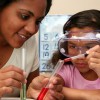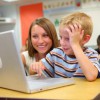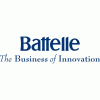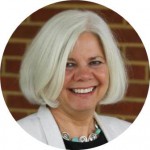 Join VASCD in Williamsburg this December 2-4 for their 2015 Annual Conference and explore the meaning of Deeper Learning in Virginia classrooms. You will hear from nationally renowned experts and have dialog with other Virginia educators who are engaged in deeper learning—both their students’ and their own. And, you will return to your own school setting with new ideas, practices, resources and motivation! Register by June 15 for Early Bird Rates!
Join VASCD in Williamsburg this December 2-4 for their 2015 Annual Conference and explore the meaning of Deeper Learning in Virginia classrooms. You will hear from nationally renowned experts and have dialog with other Virginia educators who are engaged in deeper learning—both their students’ and their own. And, you will return to your own school setting with new ideas, practices, resources and motivation! Register by June 15 for Early Bird Rates!
Monthly Archives: April 2015
Tech It Up: Win $100,000 in Technology for Your School – Enter by April 30
 Enter the Sharp Classroom Technology Challenge to win $100,000 worth of technology from Sharp Electronics Corporation.
Enter the Sharp Classroom Technology Challenge to win $100,000 worth of technology from Sharp Electronics Corporation.
Sharp Electronics Corporation is awarding $100,000 worth of state-of-the-art Sharp products to one K-12 accredited school in the 50 United States and District of Columbia. In addition, 10 runners-up will win a 70″ Class AQUOS BOARD™ interactive display system! Continue reading
Summer PD Opportunity: Elementary Literacy Integrated With Science – Apply by May 1
 Elementary teachers: Don’t miss this incredible opportunity to engage in some exciting professional learning this summer, integrating science and literacy instruction through project-based learning! Check out the event flyer »
Elementary teachers: Don’t miss this incredible opportunity to engage in some exciting professional learning this summer, integrating science and literacy instruction through project-based learning! Check out the event flyer »
April 22 is Earth Day!
 It’s Climate Education Week, and this Wednesday, April 22, is Earth Day! Teachers, what is your class doing to influence positive environmental change? Check out Earth Day Network’s toolkit featuring a week’s worth of lesson plans, activities, and contests for K-12 students.
It’s Climate Education Week, and this Wednesday, April 22, is Earth Day! Teachers, what is your class doing to influence positive environmental change? Check out Earth Day Network’s toolkit featuring a week’s worth of lesson plans, activities, and contests for K-12 students.
Is your school hosting an Earth Day 2015 event? Register your event with Earth Day Network.
What’s Going on Inside the Brain Of A Curious Child?
 “Curiosity really is one of the very intense and very basic impulses in humans. We should base education on this behavior.” ~ Dr. Evie Malaia, Assistant Professor, Southwest Center for Mind, Brain, and Education
“Curiosity really is one of the very intense and very basic impulses in humans. We should base education on this behavior.” ~ Dr. Evie Malaia, Assistant Professor, Southwest Center for Mind, Brain, and Education
“What, exactly, is curiosity and how does it work? A study published in the October issue of the journal Neuron, suggests that the brain’s chemistry changes when we become curious, helping us better learn and retain information.” Read more about “What’s Going on Inside the Brain Of A Curious Child” in MindShift.
Engaging Our Learners Through Natural Curiosity
 We educators have spent much of our time focusing on what children are expected to learn, but how they learn is often less of a focus. Babies are born with “core knowledge” that helps them process the world. When the world doesn’t function according to what babies think will happen, they become further engaged and curious to learn more (see “Why Babies Love (And Learn From) Magic Tricks” in NPR Ed). Continue reading
We educators have spent much of our time focusing on what children are expected to learn, but how they learn is often less of a focus. Babies are born with “core knowledge” that helps them process the world. When the world doesn’t function according to what babies think will happen, they become further engaged and curious to learn more (see “Why Babies Love (And Learn From) Magic Tricks” in NPR Ed). Continue reading
15 Digital Storytelling Tools for Educators
 “Engaging, multimedia-rich digital stories can capture the attention of students and increase their interest in exploring new ideas. Combining storytelling with powerful digital creates a truly authentic learning experience that helps students develop a wide range of intellectual skills.”
“Engaging, multimedia-rich digital stories can capture the attention of students and increase their interest in exploring new ideas. Combining storytelling with powerful digital creates a truly authentic learning experience that helps students develop a wide range of intellectual skills.”
Check out 15 digital storytelling tools on David James’ Social Learning blog.
Communicating With Parents Who Don’t Speak English: A Guide for Teachers and Staff
 View a more current version of this information:
View a more current version of this information:
Communicating With English Learner Families: A Guide for Teachers and Staff (March 8, 2018)
Suppose one of your students has been coming to school late and her grades are starting to slip. You call home to discuss with the parent, but it’s clear that the woman who answers the phone doesn’t understand English. You hang up and wonder how you can communicate better with your student’s family.
Did you know that Albemarle County Public Schools has an interpreting and translating system that can help staff bridge the gap with limited English speaking parents? Continue reading
2015 Women’s STEM Forum – April 24
 Battelle invites your students to the 2015 Women’s Science Technology Engineering and Math (STEM) Forum on Friday, April 24, from 9 a.m. to 2 p.m. at the UVA Northfork Research Park, Town Center II, 4th floor conference center. Battelle is targeting 5-8 students per school in 10th-11th grade. Continue reading
Battelle invites your students to the 2015 Women’s Science Technology Engineering and Math (STEM) Forum on Friday, April 24, from 9 a.m. to 2 p.m. at the UVA Northfork Research Park, Town Center II, 4th floor conference center. Battelle is targeting 5-8 students per school in 10th-11th grade. Continue reading
